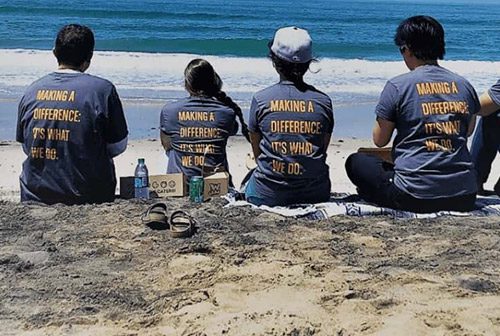A lot of people these days want to feel a sense of place in the things they eat. Whether they do it for culinary or environmental reasons, there’s a growing demand in San Diego for locally sourced food. You can easily find local citrus and squash at your neighborhood farmer’s market, but things get a lot murkier when it comes to seafood. While there some notable ‘farm-to-table’ and ‘slow food’ exceptions to the rule, chances are when you’re biting into a fish taco in Ocean Beach or sushi in a fancy restaurant, the protein on your plate was caught thousands of miles away.
The National Oceanic and Atmospheric Administration reported last year that more than three-fourths of the fish Americans eat comes from other countries. You’d think San Diego might be the exception, since we’re right on the ocean. But many of us tuck into Alaskan king crab or Chilean sea bass without a second thought.
Part of the reason it’s tough to find and support restaurants that serve local fish is because there just aren’t as many fish as there used to be. In the 1980s, we had a tuna fishing fleet to rival any in the world. Fishermen and processors would deliver fresh-caught tuna straight to markets and restaurants to be served that day.
Then the tuna fishery started to dwindle. Nowadays, the only thing we have that even comes close is our sardines, which are sustainable and local, but are mostly used as bait for larger fish. Even the restaurants that make a concerted effort to buy local often rely heavily on fish from places like Baja, China and Greece.
A recent New York Times article highlighted a similar challenge in San Francisco. The decline of California fisheries has made it hard even for people in the Bay Area—where they invented the term locavore—to get local seafood. In 2007, California commercial fisheries landings were down by almost half from 2000, according to the National Ocean Economics Program. And the value had dropped by more than half, from $276.5 million to $120.2 million. We’re seeing the same troubling trend here in San Diego County, where the numbers of fishing boats, trips and processors are all steadily declining, along with commercial revenues.
Thankfully, California is in the midst of implementing the Marine Life Protection Act, a landmark law designed to restore declining sea life populations through a mixture of science and community input. The result will be a network of protected “underwater parks” where fish stocks can recover and grow. Such networks are already in place between Half Moon Bay and Point Conception, and the wheels are in motion for creating protections for our home waters here in Southern California.
California is poised to set the gold standard for ocean protection, but we’ve got to meet the promise of the law with sound implementation. In August, the Fish and Game Commission voted to create a network of underwater parks from Mendocino to Half Moon Bay, protecting 155 square miles of vital kelp beds, canyons and rocky reefs where fish and shellfish feed and breed. These protections will help support the recovery of depleted fisheries like rock fish and abalone.
Here in Southern California, Fish and Game is considering four possible marine protected area plans, weighing the importance of our ocean’s long-term health and productivity against short-term costs. They will move forward with a final decision in the fall of 2010, after a thorough economic and scientific review of the options on the table. I for one hope they vote for strong protections—it’s an investment that will pay big dividends.
If we don’t take steps now to help our troubled ocean resources, we’ll continue to see more and more farmed fish or fish from far off places on our plates. I hope we can look forward to a day when the local yellowtail, halibut and swordfish that used to flourish in our waters come back in great numbers. Until then, I encourage you to vote with your fork and request local, sustainably harvested seafood from our nearby restaurants.













